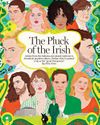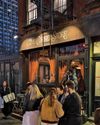
IN THE LATE SUMMER of 1986, I packed up my things and, with my 1-year-old son, moved to Detroit to begin writing about fashion for the News. I was 30, and I remember thinking that the true fashion of America was vernacular. It was the plain cotton dress, the beauty of the useful garment or the secondhand shirt. But, equally, it was the extraordinary loose-hip drape of the jeans of a young Detroit designer named Maurice Malone, who was involved in the city’s burgeoning techno scene, and who was the first designer I knew to see that the look of falling-down trousers on skinny male bodies was a kind of aesthetic. Proust may have written knowingly of women’s dress, but it was James Agee who showed me, in Let Us Now Praise Famous Men, his and Walker Evans’s portrait of three tenant farming families in Depression-era Alabama, that all clothes “shaped to their context” can have dignity—the tailored suit as well as a “pierced, sewn-together cockeyed” sun hat. Or it was F. Scott Fitzgerald, writing about the early flappers, who led me to believe that the real archetype of the emancipated woman was not Coco Chanel, as historians maintain; rather, it was a hard-boiled American teen in a flimsy dress. Later, when I found a photograph of a young flapper in a cheap cotton shift, her bare legs dangling over the side of a Model T, I finally understood what Fitzgerald meant when he wrote, “Isolated during the European War, we had begun combing the unknown South and West for folkways and pastimes.” He was describing how the freedom of the automobile had allowed for new freedoms among young people, which gave rise to a liberated homegrown style. “Who could tell us any longer what was fashionable and what was fun?” he asked.
Esta historia es de la edición August 30 - September 12, 2021 de New York magazine.
Comience su prueba gratuita de Magzter GOLD de 7 días para acceder a miles de historias premium seleccionadas y a más de 9,000 revistas y periódicos.
Ya eres suscriptor ? Conectar
Esta historia es de la edición August 30 - September 12, 2021 de New York magazine.
Comience su prueba gratuita de Magzter GOLD de 7 días para acceder a miles de historias premium seleccionadas y a más de 9,000 revistas y periódicos.
Ya eres suscriptor? Conectar

Trapped in Time
A woman relives the same day in a stunning Danish novel.

Polyphonic City
A SOFT, SHIMMERING beauty permeates the images of Mumbai that open Payal Kapadia's All We Imagine As Light. For all the nighttime bustle on display-the heave of people, the constant activity and chaos-Kapadia shoots with a flair for the illusory.

Lear at the Fountain of Youth
Kenneth Branagh's production is nipped, tucked, and facile.

A Belfast Lad Goes Home
After playing some iconic Americans, Anthony Boyle is a beloved IRA commander in a riveting new series about the Troubles.

The Pluck of the Irish
Artists from the Indiana-size island continue to dominate popular culture. Online, they've gained a rep as the \"good Europeans.\"

Houston's on Houston
The Corner Store is like an upscale chain for downtown scene-chasers.

A Brownstone That's Pink Inside
Artist Vivian Reiss's Murray Hill house of whimsy.

These Jeans Made Me Gay
The Citizens of Humanity Horseshoe pants complete my queer style.

Manic, STONED, Throttle, No Brakes
Less than six months after her Gagosian sölu show, the artist JAMIAN JULIANO-VILLAND lost her gallery and all her money and was preparing for an exhibition with two the biggest living American artists.

WHO EVER THOUGHT THAT BRIGHT PINK MEAT THAT LASTS FOR WEEKS WAS A GOOD IDEA?
Deli Meat Is Rotten